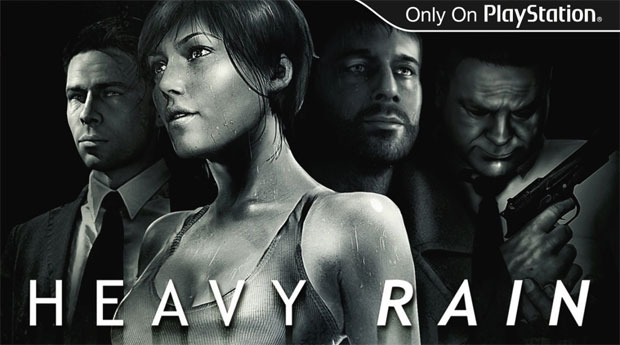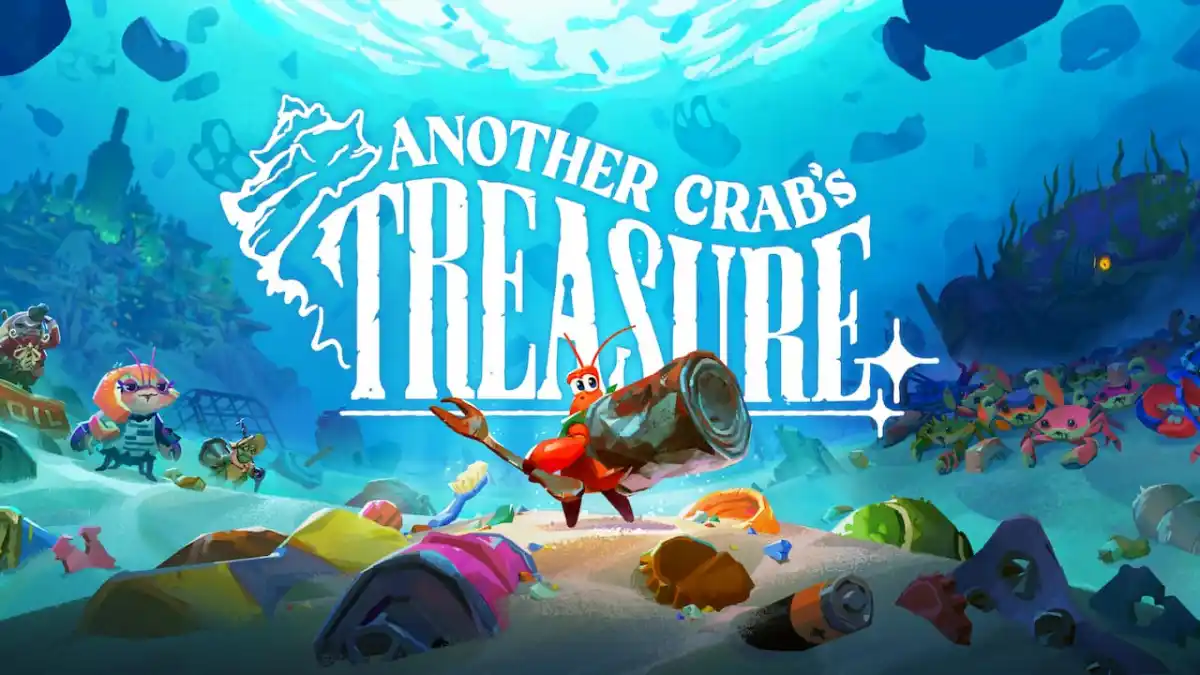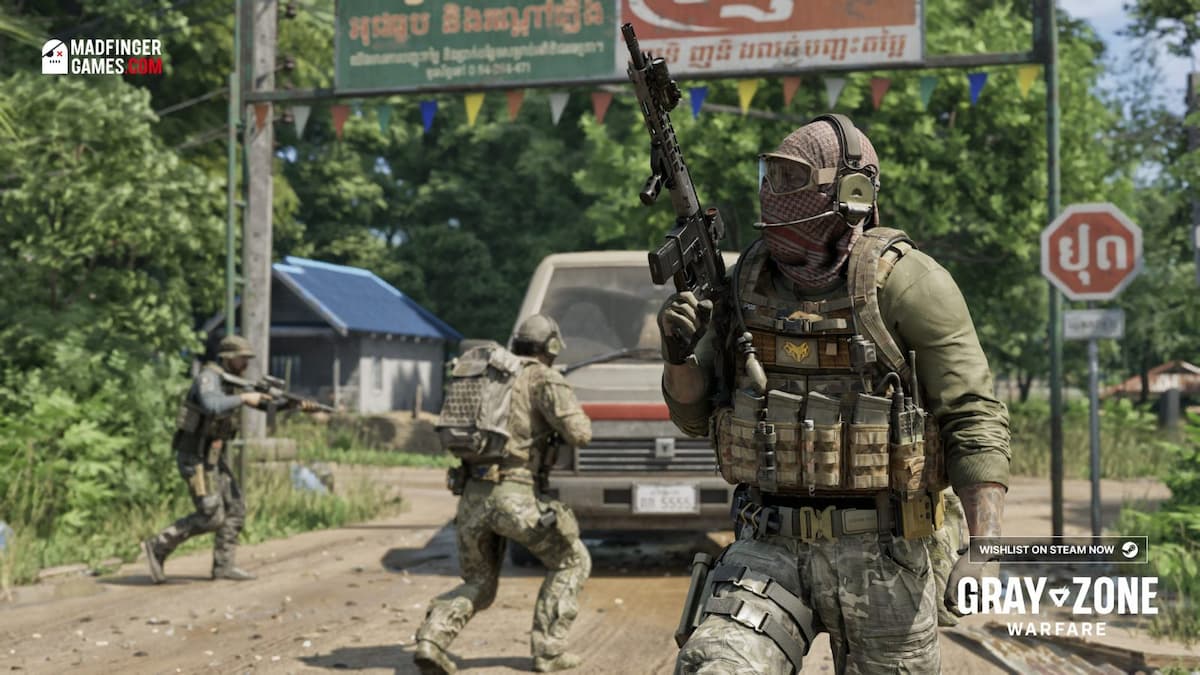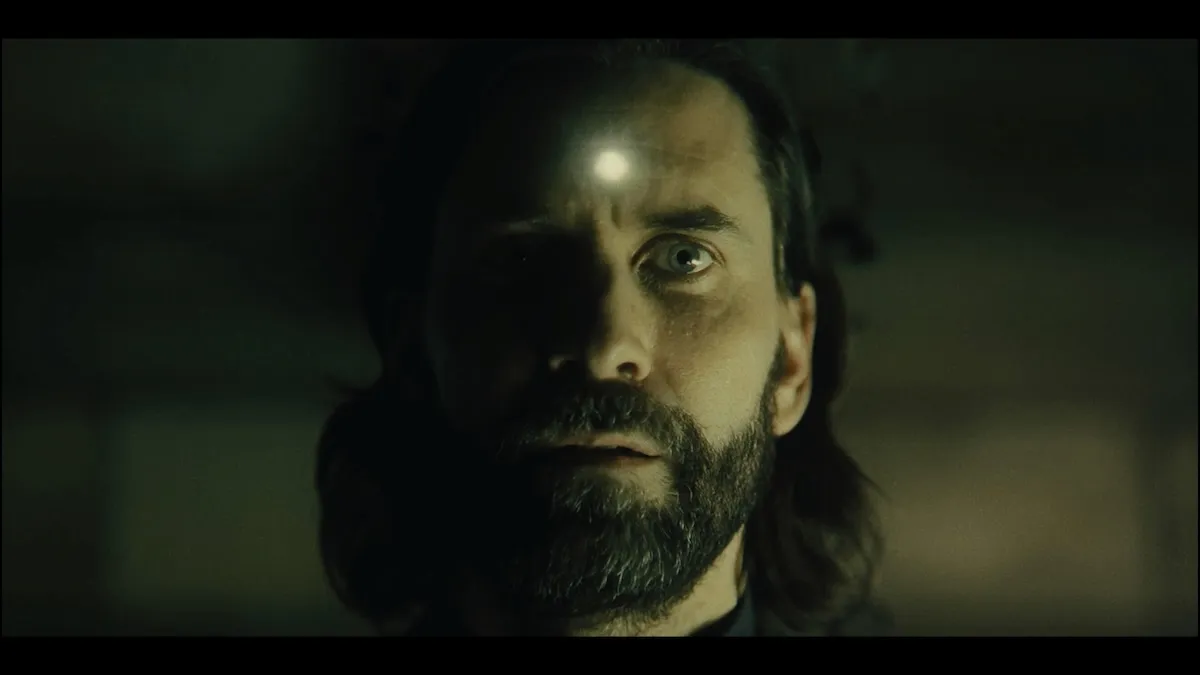After spending hours with a preview build of Quantic Dream’s Heavy Rain, I’ve found that it’s certainly a difficult title to talk about. One of the most anticipated PlayStation 3 exclusives for 2010, I’m still not entirely sure it’s even a game… at least not in the traditional sense.
David Cage, the founder and co-CEO of Quantic Dream, agrees, saying that the gameplay is “difficult to describe because it is based on very different paradigms compared to most games.”
“Most games are about shooting or driving, and they are traditionally a series of obstacles,” he tells me. “Describing the experience is quite simple, as you can refer to other games in the same genre. You cannot really do that with Heavy Rain because the game is not based on the same rules.”
As Cage puts it, unlike traditional games, Heavy Rain isn’t a “series of challenges.” He calls it a “journey that changes based on a player’s actions.” The player, in this case, isn’t simply a “player” in the conventional sense — he’s “the actor and writer of the story,” Cage explains, “he can affect what is going to happen and see the consequences of his actions.”
“Gameplay is entirely contextual,” he continues. “Sometimes it’s about interacting with the environment; sometimes it is about changing the mind of another character; sometimes it is solving a situation; and each scene is unique and the player never does the same thing twice.” Heavy Rain is about “playing with the story almost in a physical sense, changing it, twisting it, discovering it, making it unique, making it yours.”
“Like in real life, everything is about choices.”

How the player moves through Heavy Rain will be familiar to anyone who’s played Quantic Dream’s previous game, Indigo Prophecy (or Fahrenheit, to those of you outside of North America). Players interact with the world using a combination of the right analog stick, and what can best be described to most players as “quicktime events,” with button prompts quickly appearing on the screen to direct the player’s fingers. But Quantic Dream doesn’t call them “quicktime events;” they instead refer to this action system as PAR, short for “Physical Action/Reaction.”
“I gave myself very early on some very simple rules,” Cage says of the interface, concluding that it should support the narrative and never be an obstacle to the player. “Whatever we do, it should be visually integrated to the experience so the player doesn’t see it anymore after a while.” In Heavy Rain, the interface is integrated in 3D directly in the environment, blending in with the on-screen action, as opposed to a simple 3D interface plastered on the screen.
The idea was also to create the experience of some physical immersion: every action is designed to, in some way, mimic what the character is doing on the screen. Opening a door, for example, is done with the right analog stick (based on an on-screen prompt), but positioned in such a way to make the player feel like he or she is performing the action.

The speed of these animations can be controlled by the player as well. You’re introduced to this early on, when you control the hands of Ethan Mars as he carefully sets dishes on a table. While playing, I wasn’t able to break the dishes or perform the action “wrong,” but the reaction of other characters in the room changed accordingly. Haphazardly swinging the analog stick to “get the job done quickly” didn’t please Ethan’s wife, who was very vocal that she preferred he’d be a bit more careful.
Cage also points to something Quantic Dream calls “MPRESS,” which has the player holding a series of buttons — one after the other — until he or she is put into an uncomfortable position with the controller. “The idea was to emulate how the character feels. If he is, for example, hiding in a very narrow place, he probably feels very uncomfortable. So does the player having to hold all these controls. He cannot keep the position for too long, his fingers hurt, etc. It sounded obvious when we started talking about it, and the result — once implemented in the scenes — really confirmed our expectations.”
An early example of MPRESS is found in our introduction to Agent Norman Jayden, as he follows a trail of DNA and clues at an Origami Killer investigation scene. Jayden is led up a muddy hill in the rain, the game prompting you to hold the DualShock 3’s trigger buttons in such a way that bends and twists your fingers. It’s annoying and frustrating… kind of like climbing up a muddy hill in a downpour. Finger slips? Jayden slides down the hill, and you have to start over again.

It’s also difficult to talk about the opening few hours of Heavy Rain (spread across 11 chapters, which I played, based on the preview code Sony had sent me), for fear that any little detail could be considered a major spoiler for players. I asked Cage to give me his best pitch; not surprisingly, he’s had practice keeping it vague.
“Heavy Rain is a dark thriller taking place on the East Coast of the US,” he explains. “Four characters will see their lives changed by the investigations surrounding the Origami Killer, a serial killer who leaves an origami in the hand of his victims.”
During the game’s first few chapters, you’re introduced to all four characters Cage is referring to: Ethan Mars, an architect; Scott Shelby, a private detective; Norman Jayden, an FBI agent; and Madison Paige. Each chapter is focused on an individual character. But their destinies, Cage explains, are intertwined.
This is hinted at early on in the game — both Shelby and Jayden are investigating the Origami Killer murders independently, for instance — but it’s still difficult to say what will bring their tales together. The only clue Cage offers is this simple question: “How far are you prepared to go to save someone you love?”

“The game is really dark,” Cage tells me, “evoking mature themes in a mature way like few games before. It’s full of twists and turns.”
Admittedly, Heavy Rain doesn’t really start with anything remotely resembling twists or turns. Quite frankly, my biggest concern with the first few hours of Heavy Rain is that they’re a bit — how do I put this gently? Uneventful. Slow. Perhaps “boring” by videogame standards. The game’s first scene has players waking up as Ethan Mars, and then performing a decidedly banal routine: brushing teeth, taking a shower, drinking orange juice from a carton, playing with his kids. By comparison, Indigo Prophecy starts off with a murder, with the blood on the hands of the game’s protagonist, Lucas Kane.
With most games, Cage says, players get involved “into the troubles of the main character before even knowing who he is.” There’s no empathy for the player as the story develops. He points to Indigo Prophecy‘s Lucas Kane, saying “the character remained colorless until the end.” So Heavy Rain‘s “slow start” is intentional, with Quantic Dream taking the time to introduce four different characters individually, showing them to the player and giving him/her some background on them. Cage hopes this will “let the player know them intimately, so when the story actually starts, they will feel a strong and deep empathy for them; they will really share how they feel. In short, the player will care for them.”
“You always care more when something bad happens to someone close to you than to someone you don’t know,” he explains. “Same thing here. I take the time to make you know the characters so you will care more for them when something will happen.”

Right past the start screen (set to the visuals of a dimly lit alley, rain pounding the concrete) it’s almost immediately obvious that Heavy Rain, in both its tone and style, may take cues more from film than traditional games. Cage tells me he was influenced by major thrillers, mentioning Silence of the Lambs, Se7en, Fight Club, and the Korean film Memories of Murder.
“But there are other influences, sometimes even tributes to one famous director in particular. I’ll let players discover who I’m talking about,” he teases.
So if Heavy Rain is not a traditional game — and maybe not even a videogame at all — what is it? I pitch the term “interactive movie” to Cage; he’s heard it before. He says that using that term to describe the title has been a tricky question right from the start of development. But still, it may be the clearest and simplest way to describe just what Heavy Rain is… even though Quantic Dream doesn’t really use it.
“It is in many ways what Heavy Rain is,” he says of the term, “a visually told story that the players can affect by his actions, but we decided early on not to use it because of its negative meaning. Based on the first interactive movies in the old days, some people may have thought that this is what Heavy Rain is — a series of nice cut-scenes put together with a meaningless choice to make every twenty minutes.”

Still, Cage says, they had to face these kind of negative comments and expectations from people who had never played the title. In their minds, Cage says, there is no other way a story can be told except through cut-scenes.
“In Heavy Rain, the player is in control second to second; he tells the story through his actions,” he says. “All this is done in a very fluid, seamless way, with no cut-scenes, no big flashing sign to make decisions, and this is what makes the game really unique.”
“Some people keep criticizing the system without having tried it,” he finally says. “I don’t want to be defensive on this anymore. If you don’t believe in it, try it and see for yourself. “
You’ll have the chance on February 23, when Heavy Rain hits shelves in North America, exclusively for the PlayStation 3.




